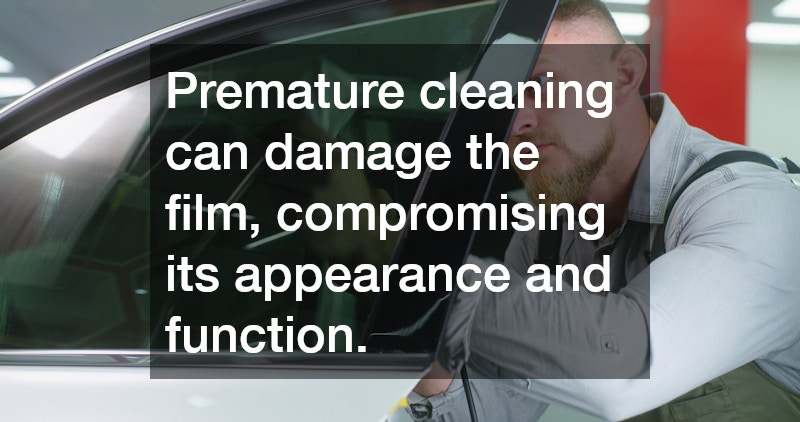Car tinting is a popular choice for vehicle owners looking to enhance privacy, reduce glare, and achieve a sleek look for their cars. Before you schedule a car tinting service, it’s crucial to understand various aspects like types of tint, service costs, local regulations, and maintenance. This guide will provide you with essential information to make an informed decision.
What Are the Different Types of Car Tint?
Dyed Window Tint
Dyed window tint is composed of a layer of dye between an adhesive layer and a protective outer layer. This type of tint provides a non-reflective appearance and is primarily used for privacy and reducing glare.
While dyed tints are typically the most affordable option, they can fade over time with prolonged exposure to sunlight. Despite this limitation, they remain a popular choice for those prioritizing style and privacy on a budget.
In addition to being cost-effective, dyed tints can also block the sun’s rays, reducing your car’s interior temperature. However, it’s important to remember that they don’t offer as much UV protection as other types of tints.
Metalized Window Tint
Metalized window tint is crafted with small metallic particles that reflect heat and light, offering enhanced UV protection compared to dyed tints. This type of tint is more durable and scratch-resistant, effectively helping in reducing glare and enhancing privacy.
However, one downside of metalized tints is that they can interfere with electronic devices, including GPS systems and phone signals. You should keep this interference in mind while deciding between tint options.
Despite the potential issues, metalized tints provide significant heat reduction, which can lead to longer-lasting upholstery and a more consistent cabin comfort. Their higher cost is often justified by the benefits they provide.
How Much Does Car Tinting Typically Cost?
Factors Influencing Cost
The cost of car tinting can vary significantly based on several factors, including the size of the vehicle, the type of tint used, and the brand chosen. Larger vehicles such as SUVs may require more material, thus increasing the cost of the service.
Due to their enhanced properties and durability, high-quality tints, like ceramic or metalized options, tend to be more expensive than dyed tints. Branding also plays a crucial role; well-known brands with a reputation for quality may cost more.
It’s essential to consider that investing in a higher quality tint may result in long-term savings through better UV protection and increased durability. An effective tint can reduce the need for interior cooling, potentially lowering energy costs in the long run.
Finding a Reputable Service
When searching for a car tinting service, it’s crucial to conduct thorough research to assure you select a reputable provider. Start by reading reviews online and asking for recommendations from friends or family who have had their cars tinted.
A reliable car tinting service should offer a warranty on its work, which shows its confidence in the quality and durability of its installation. Additionally, choose a provider with extensive experience and a portfolio of satisfied customers.
Taking the time to verify a tinting service’s certifications and licenses can safeguard you against subpar workmanship and potential legal issues. A professional service should adhere to all local regulations, making sure that your tint is both high-quality and compliant.
Are There Any Legal Restrictions on Tinting?
State and Local Regulations
Before scheduling a car tinting service, it’s vital to understand the legal restrictions in your state and locality regarding window tints. Regulations often dictate the darkness and reflectivity permissible for different vehicle windows.
States vary widely in their tinting laws, so it’s essential to verify the specific rules for your area before proceeding. You can usually find this information through your local Department of Motor Vehicles or a reputable tinting service.
Consequences of Non-Compliance
Using illegal tints can lead to various legal issues, including tickets, fines, and being required to remove the non-compliant tint. Law enforcement officers often check for compliance during routine stops, adding to the potential for inconvenience.
Non-compliant tints pose legal risks and can also affect vehicle safety by compromising visibility and interfering with night driving. It’s advisable to ensure your tinting choices align with legal standards.
How to Maintain Your Car Tint?
Initial Care After Installation
Following a tint installation, it’s crucial to allow the film to cure properly by avoiding rolling down your windows for a few days. This period ensures the adhesive sets correctly and prevents bubbles or peeling.
Refrain from cleaning the windows immediately after installation; instead, give the tint time to bond with the glass surface. Premature cleaning can damage the film, compromising its appearance and function.
Long-Term Maintenance Tips
To preserve the quality of your car tint, use a gentle, ammonia-free cleaner and a microfiber cloth for regular cleaning. Harsh chemicals or abrasive materials can damage the tint, leading to a shorter lifespan and diminished appearance.
Perform regular checks for signs of bubbling or peeling, which indicate the need for professional intervention to avoid further damage. Addressing small issues early can prevent the need for a full replacement.
By understanding the variety of tint options, calculating costs, adhering to legal restrictions, and applying the right maintenance techniques, you can assure that your car tinting experience is both pleasant and beneficial. Scheduling a car tinting service is a valuable investment for enhancing the look and functionality of your vehicle.




